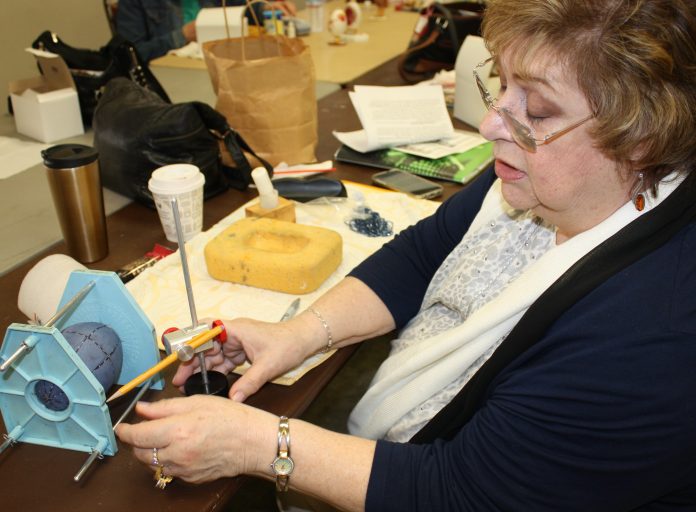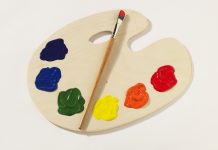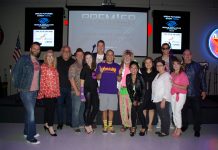By Colleen Janssen
“We make Fabergé-style eggs,” said Judy Negrete, President of the Southern California Egg Artistry Club. Members meet at the Buena Park Senior Center twice each week to create their egg masterpieces.
“We use all types of eggs,” said Negrete. “We don’t use any that are endangered. We order them by the dozens.”
By Colleen Janssen
“We make Fabergé-style eggs,” said Judy Negrete, President of the Southern California Egg Artistry Club. Members meet at the Buena Park Senior Center twice each week to create their egg masterpieces.
“We use all types of eggs,” said Negrete. “We don’t use any that are endangered. We order them by the dozens.”
Negrete shared a brochure showing eggs to order including: Araucana Chicken, Bob White Quail, Button Quail, American Singer Canary, Bantam Chicken, Chukar Partridge, Cockatiel, Chilean Tinamou, Bantam Duck, Emu, Guinea Hen and many more. The group members prefer to use pidgeon, emu and goose eggs.
“We cut them with a dremel tool or dentist’s drill. If needed, we add a hinge,” continued Negrete. “We can add a clock, Swarovski crystals, and other decorations. Then, we add a stand.”
The group members agreed that quality products are important to use for the projects. Cheap products don’t last. They even use archival glitter since it lasts a long time. With the hours of work and, sometimes incredible costs that go into the projects, it would be a shame to have an egg fall apart due to inferior materials.
“I started doing this because I had health problems. This became my therapy,” shared Negrete. “I was jealous of my husband who was having fun while I was home babysitting. I saw these at a craft store and my husband suggested I try it. He didn’t know how expensive it could be.”
New students in the free class are invited to join the club. All new students start with basic kits so they can the learn techniques they will use for more difficult egg designs. The club sells the kits that come with supplies needed to complete the project.
Right now, members are making a Nemo the Fish project. Once Nemo is finished, he is mounted on top of a coral and driftwood stand. To complete this project, the artist must paint Nemo, add glitter, add stripes, add eyes, make slits for fins, make the fins out of eyelash yarn and finish the assembly.
“This is my second year taking the class,” said Valerie Holsworth. “I am a member of the club and I’ve completed all of the projects in the senior center display case. I also made a clock using an emu egg, a candy jar out of a goose egg and a spring egg with lattice work.” Holsworth continued, “I put them in a display case at home.”
Club Vice President, Lupe Gonzalez, was excited about the fairy garden projects coming up. “We will have a choice to make a fairy garden egg using one of the following: penguin, panda, elephant, squirrel, duck, turtle, frog or deer. These are really tiny gardens made in half of an egg.”
“There are many options for these eggs,” said Negrete. “You can make a necklace from a quail egg, a doll bust can be used and add a decorated skirt, some people like to use tole painting skills to decorate their eggs.”
“I like to use emu eggs. They are blue and rough and are good for carving,” continued Negrete. “They have four layers of color; dark blue, turquoise, light grey and white, so they look great when you carve them. Some people carve them, then put a light inside to create a silhouette.”
Members agreed that this type of art teaches patience since it requires the artist to work slowly over a period of time. The more eggs one makes, the better their skills will be.
“They offer a Master’s program through the international club,” said Negrete. “There are 12 categories within the levels of novice, intermediate, master and grand master. You enter your eggs for judging at egg shows to determine your level.”
There are egg shows throughout the year. A few coming up include Sacramento, San Antonio, Dallas, Pennsylvania and Ohio.
While the senior center classes are free for seniors to take, students will need to pay for the kits and supplies used. To join the club, talk to Negrete at the class. Membership is $20 per year or $13 to receive the newsletter for non-club members.











